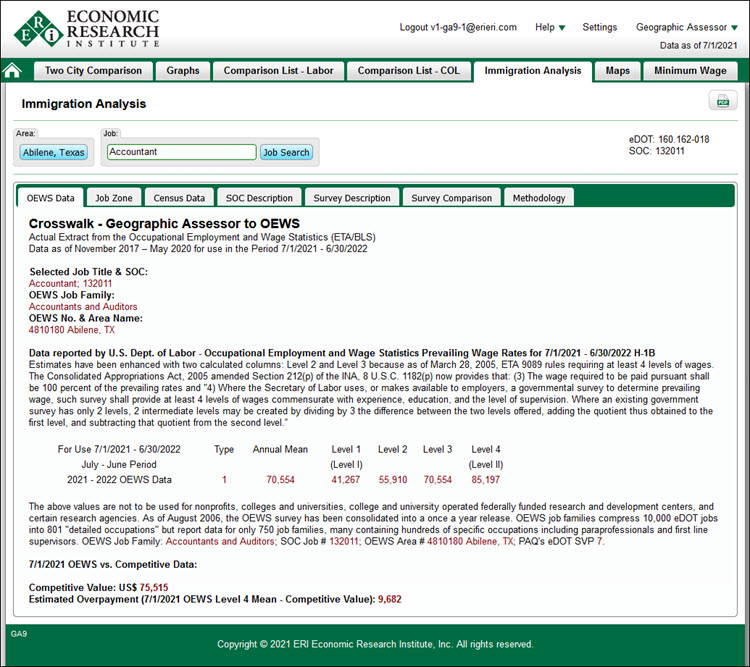The OEWS Data tab displays Occupational Employment and Wage Statistics (OEWS), formerly known as Occupational Employment Statistics (OES), prevailing wage rates for 2020-2021 H1-B Estimates. Data shown is that reported by the US Dept. of Labor for the last three years.
Rates have been enhanced with two calculated columns: Level 2 and Level 3. This is due to the fact that, as of March 28, 2005, new ETA 9089 rules call for surveys to provide at least four levels of wages. The Consolidated Appropriations Act, 2005 amended Section 212(p) of the INA, 8 U.S.C. 1182(p) now provides that: (3) The wage required to be paid pursuant shall be 100 percent of the prevailing rates, and:
4) Where the Secretary of Labor uses, or makes available to employers, a governmental survey to determine prevailing wage, such survey shall provide at least 4 levels of wages commensurate with experience, education, and the level of supervision. Where an existing government survey has only 2 levels, 2 intermediate levels may be created by dividing by 3 the difference between the two levels offered, adding the quotient thus obtained to the first level, and subtracting that quotient from the second level.
Please note: Values shown are not to be used for nonprofits, colleges and universities, college and university operated federally funded research and development centers, and certain research agencies. OEWS job families compress 10,000 eDOT jobs into 750 job families, many containing hundreds of specific occupations including paraprofessionals and first line supervisors.
Also shown is a comparison of the latest OEWS Level 4 Mean and the most recent Assessor Series values for the same job.
In 2005, the Regs for H1-B visa wage comparisons were altered to allow for the use of a median wage figure if an employer-provided survey does not contain an arithmetic mean. Still, ERI recommends (and builds into the Geographic Assessor) the use of only OEWS data supplied by the US government. The practical reason is that OEWS data is typically low (except for those jobs where they include first-line supervision).
See Immigration Analysis Background for related information.
